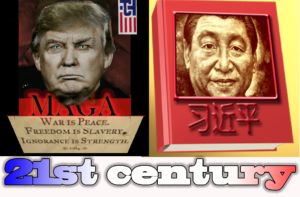 Seems like soybean tariffs do not block foreign firms looking to China for “made in China” technology!
Seems like soybean tariffs do not block foreign firms looking to China for “made in China” technology!
- Anyone want to buy soybeans? How about some natural gas or pork?
- Can any superpower live off off a superpower navy with a third world production economy?
- Isn’t that what happened to the Soviet Union?
- How many folks ever bought a LADA? While Trump focuses on soybeans, China’s power as the world’s factory just grows and grows with an increasing emphasis on the underlying need for research and development of CHINESE products. “There is little evidence of a systemic spike in the number of firms shifting production away from China in the wake of the trade dispute,” Herald van der Linde, HSBC Global Research’s head of equity strategy in the Asia-Pacific wrote in a study released in the South China Morning Post. The label “Made in China” today

We used to make fun of these failed efforts at product development behind the iron curtain. But, we made a mistake. The Trabi and Lada were not failures because of the lack of good workers, they failed because the USSR and GDR failed to invest in technology. The Kremlin spent wildly on an arms race, financing its economy with exports of a low tech product ..oil. Trump’s USA is making the same mistake. China is not making that mistake. Imagine the next generation of Chevies depending on Chinese technology and cheap American labor.
dominates.
The effect is much more than just China offering cheap labor. As an example, German chemicals giant BASF is implementing its “Verbund” project for composite chemicals in Zhanjiang, Guangdong Province. The 10 billion U.S. dollar site will research and develop materials for industries including automotive, construction, high-speed rail, electronics, and aerospace. Boeing’s iconic 787 is one big composite structure.
Harley Seyedin, president of the American Chamber of Commerce (AmCham) in South China said his group found that foreign companies have increased their 2019 reinvestment budgets by a whopping average of 37.9 percent over 2018, the highest level since 2010. China’s Xingua reported that “high-tech industries soared 50.6 percent year on year, with the high-tech manufacturing sector attracting 25.97 billion yuan, indicating the foreign investors’ bigger bite into the country’s manufacturing sector.”
Even Trump’s belated focus on intellectual property may work in China’s favor. The Xi government is developing new laws designed to protect IP. CHINESE IP. It is hard to see how these laws will work to America’s favor as China educates more and more engineers and provides the government funds that are so important for basic research and research development. How can a trade agreement block that sort of investment?
I dated a girl from Cnina once. I was From Cnechnia. She drove a LADA and I drove a Chevie. Our relationship didn’t stand a chance.
The problem for the USSR is they went hole hog for the command economy. The LADA and Trabant are not bad products in a command economy. Workers only need a few choices of car. Ideally they should not need cars. Same goes for toothpaste. The waste that is inherent in Capitalism can go to building tanks and ships so we can help our fellow workers follow the great example of the USSR.
That does not then nor now fit the United States. The United States government has limited or no control over the economy and generally is hands off. Well sort of. Arguable it is the economy or corporations that have captured the government (ie big money), but consumers only need a certain number of cars in their garages or a certain number of toasters, and much money and effort goes into getting consumers to buy one more toaster.
China saw the USSR fail, and has adopted a kind of Capitalism, on Communisms or the Communist parties control. There are still f year plans. Though not as much control at the center. How much control Beijing has had is always debatable as they are not transparent and local officials have always found ways to keep local control and resources either in their own pockets or to help their local people.
There is an inherent friction in this combined system. At some point entrepreneurs, moguls, and capitalists expect a place at the table of power. They can be there if they are good communists which is why many of the capitalists in China wear the peoples military uniforms. Here if soldiers were building cars or tanks or other things would cause national outcry from different sources but not in China.
China’s communist party expects to stay in power and will not share. There will be another Tinamin square, and other demonstrations where the army comes in and shoots people as all power comes at the end of the gun per Mao. The technologies that help the party will go forward, others will die on the vine. There maybe more innovation, but perhaps not. China government rather than allow all Chinese full access to the internet seeks to have central control over the internet in China.
This progress is a double edged sword, and the central power seems to recognize that.